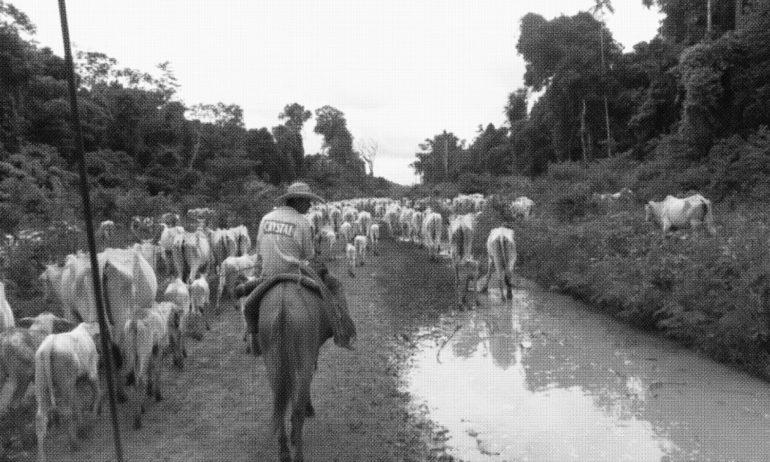Dr. Peter May is a resource economist and full professor at the Federal Rural University of Rio de Janeiro, who founded the Brazilian Society for Ecological Economics-ECOECO. He is a Steering Committee member and chapter author of the Economics of Ecosystems and Biodiversity for Agriculture and Food (TEEBAgriFood) report on how to evaluate agriculture and food systems while considering a range of social, human, and environmental dimensions across the value chain.

Dr. May has acted as a visiting scholar at both the University of California-Berkeley and Columbia University. He served as program officer at the Ford Foundation’s Rio Office and has written widely in the subjects of ecological economics and environmental policy. May also formerly served as the Associate Director of Friends of the Earth-Brazilian Amazon. Besides being an active member of the TEEB community, he was recently elected to the Board of the International Society for Ecological Economics.
Food Tank sat down with Dr. May to discuss the TEEBAgriFood report’s theory of change, and how to take it from information to action.
Food Tank (FT): What’s the most interesting thing you learned from working on the TEEBAgriFood report and working with the TEEBAgriFood organization?
Dr. Peter May (PM): I’ve been involved with TEEB for over 10 years, and I’ve been on the TEEBAgriFood project committee from the beginning. This report is a culmination of our efforts to understand the complexity and structure of food system externalities created by the affects of production, marketing, and consumption on the environment and society. Nearly all previous studies focused on the production of food products and some included the effects of processing and transport. The consumer’s role—usually not the focus of previous studies—is based on what and how they consume, and how price plays a role in their consumption, which may become a part of the food system’s externalities. It’s a complex system that is different for every food product and country. The main thing I learned about the food system when I was working on the TEEBAgriFood report are the complex factors that affect people and the environment along the food chain.
FT: What’s the most significant unintended consequence of our food system?
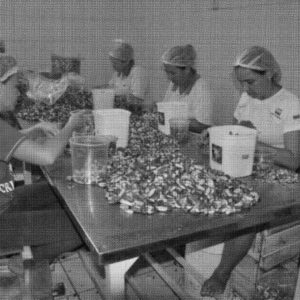
PM: The first would be that the health impact of food is becoming of greater concern as we realize we must depend upon good nutrition and food for our quality of life. The current food system is not providing this quality of life and that’s changing the benefits derived from the system. Problems like obesity, bad nutrition, and overconsumption of sugars are becoming more common in the news. Almost every few days major newspapers like The New York Times run a major article about the problem of obesity and how peoples’ budgets, well-being, and mobility are impacted by their diet. To succeed, food producers must meet market demands, and the inputs they use can become a serious factor affecting how people eat, and what they can access.
The United States is a great example of this. Many people, especially those with lower incomes, eat more processed food; In fact, the lower their income, the higher chance they may exhibit obesity and bad nutritional habits. Food access and relevant information are targeted towards different income groups and healthy food isn’t cheap. Organic, good quality, sustainably produced foods are expensive and rare, compared to a cheap meal at McDonald’s. It’s very tough to go up against.
The food system is politically motivated and impacted by who’s in power and who has access. Consumer mobilization is not enough, although companies do react to consumers changing their spending habits.
FT: What do you think is the best approach to changing our food system? Do you think it’s through international agreements, grassroots efforts, or the private sector?
PM: In terms of effects, consumer pressure is number one. If enough consumers vote with their pockets, change will come. The question is, can enough consumers mobilize to effectively accomplish a boycott? There are only two variables in price determination, one is demand, the other is supply. If the demand for a product decreases due to consumer pressure, it will drive change in the food industry.
These movements need access to communication channels, to widely read columns such as those I mentioned in The New York Times, to be successful. In my chapter in the TEEBAgriFood Foundations report, we look at the issue of getting information in the right hands and to different groups. However, scientific information can be manipulated and converted into policy that is negative for the food system. There are many barriers to go through to provide credible and useful scientific knowledge to consumers.
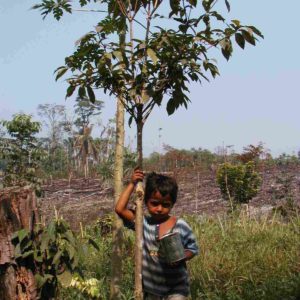
We need to have intermediate roles for all actors in the system. All stakeholders need a role. Grassroots efforts will have their role, as will consumer advocacy and good science. If we’re always changing what we tell people to eat and do not explain the reasoning well, people will stop listening and eat whatever they want. There are a lot of people in society who do not eat well because the science confuses them.
FT: What do you think is the best way to convey the information in the TEEBAgriFood report to the public?
PM: We must come up with specific cases to show the influence of this knowledge in bringing change. If we target proven policies, practices, and experiences, and what they have meant in terms of people’s health and well-being, it will help the success of the TEEBAgriFood report. One issue with the framework is that it’s hard for people to understand. We’re going to use the TEEBAgriFood lens and framework to look at cases in Brazil and other countries that are concrete and tangible and see what it adds to our understanding.
In Brazil. we’re going to look at cattle ranching and soybean-corn rotational production, which are the most influential factors in Amazon deforestation. Farmers grow the same thing on the same land, one after the other, in continuous rotation. In this study we’ll talk about the impacts on deforestation, the agrifood chain, and human health. We need to look at these cases and show how the framework provides useful information to people and makes a difference in the food system.
Additionally, we need to learn how to use social media to help get that word out. This will have positive repercussions. The framework is important and it’s surely going to have credibility among the scientific and food policy communities, but beyond that, it needs to get out into broader society. Partnerships with various communication outlets to help disseminate this complex information to the general public will be important to achieving that.
FT: How do you think TEEBAgriFood can help achieve the United Nations (U.N.) Sustainable Development Goals (SDG)?
PM: That’s a real problem because the SDGs are confusing. There are seventeen SDGs and over 240 indicators. It’s a challenge for everybody involved.
The SDGs are important and they can raise the bar in measuring what’s going on, and how we gauge strategy and success in moving towards sustainability. Showing the linkages between the SDGs and their measurement helps create an integrated perspective on achieving successful change. In TEEBAgriFood we’re focusing on the SDGs that are related to food in some way. There’s a relationship between most of the variables that affect the SDGs and how people access food. The SDGs about clean water relate to food because if you have dirty water, you’re going to have dirty food. If you deforest the Amazon to grow soybeans, you’re going to emit more greenhouse gases, and you’re going to have climate problems that will affect the ability to produce food in the future. All the SDGs interact, and it’s important to show relationships between the variables associated with the food system. If we do that in a clear manner, we will influence how people view the SDGs, helping them frame it as something that can be part of their lives instead of just another U.N. project.
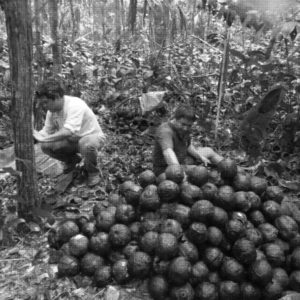
FT: What’s the important action that we can take to make more sustainable eco-agri-food systems?
PM: The most important thing is to get the word out on how food can be produced in a healthy and fulfilling way along the supply and value chains. If enough influential people from different lines of work are communicating this issue, it will help make it successful.
FT: What do you hope people will learn from this report?
PM: What we’re doing is making something that is not visible, visible. We’re providing tangible evidence and measures for unaccounted impacts, and we’re making it visible to society. If we get that across, that will make an impression. It’s a visible factor to physical impacts that have been hidden and we want to make those visible to everybody.
Click HERE to download the TEEBAgriFood report!
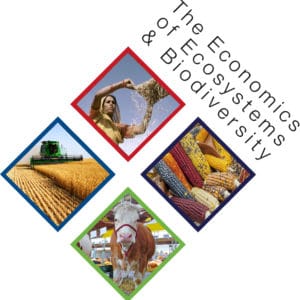 The goal of TEEB AgriFood is to more comprehensively determine the costs, benefits, and dependencies of agriculture and food production. What makes some produce less expensive in most supermarkets is in part the use of cheap—often subsidized—fertilizers and pesticides, but that retail price does not take into account hidden costs like environmental damage from runoff or human impacts on health and livelihood. Conversely, these prices do not recognize the positive benefits created by more sustainable forms of agriculture. To ensure the sustainability of agriculture and food systems, an important step is to account for the side effects, or externalities, through market mechanisms. TEEBAgriFood is creating a framework for looking at all the impacts of the ‘eco-agri-food’ value chain, from farm to fork to disposal, including effects on livelihoods, the environment, and health. This can help farmers, decision makers, and businesses more explicitly look at the impacts of different practices and policies.
The goal of TEEB AgriFood is to more comprehensively determine the costs, benefits, and dependencies of agriculture and food production. What makes some produce less expensive in most supermarkets is in part the use of cheap—often subsidized—fertilizers and pesticides, but that retail price does not take into account hidden costs like environmental damage from runoff or human impacts on health and livelihood. Conversely, these prices do not recognize the positive benefits created by more sustainable forms of agriculture. To ensure the sustainability of agriculture and food systems, an important step is to account for the side effects, or externalities, through market mechanisms. TEEBAgriFood is creating a framework for looking at all the impacts of the ‘eco-agri-food’ value chain, from farm to fork to disposal, including effects on livelihoods, the environment, and health. This can help farmers, decision makers, and businesses more explicitly look at the impacts of different practices and policies.


